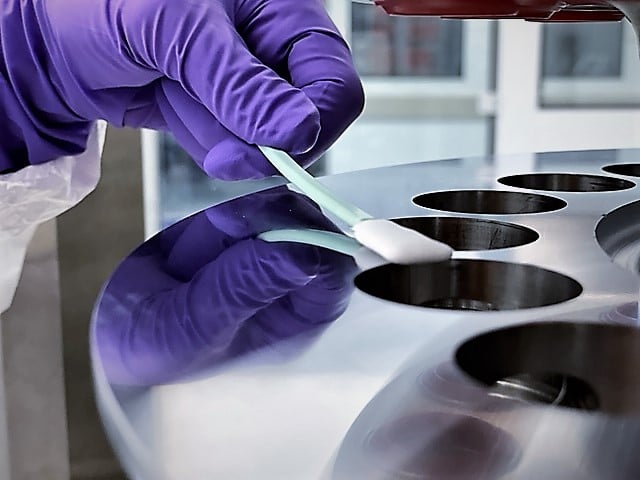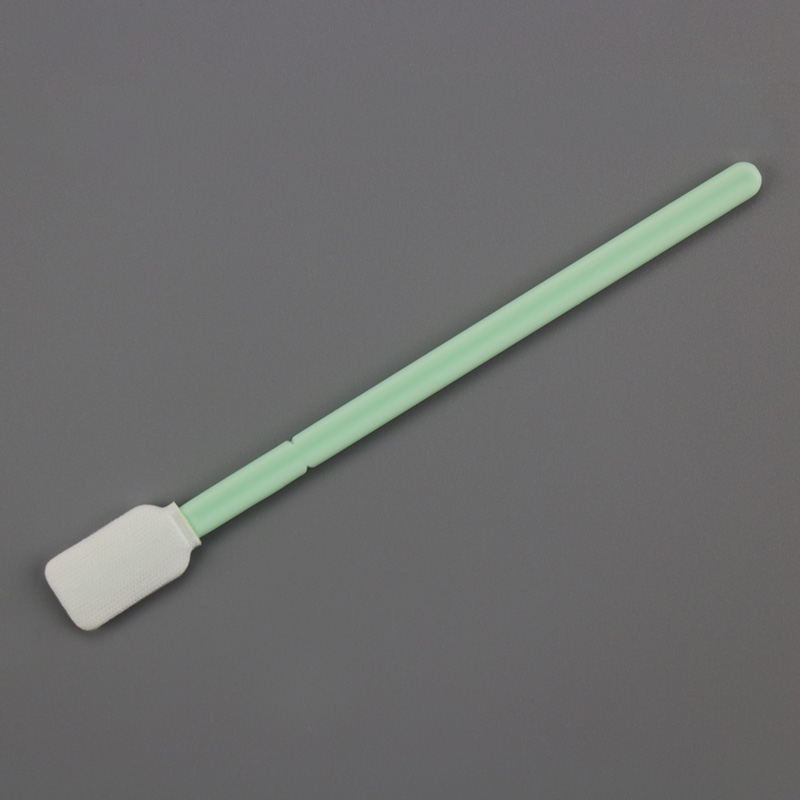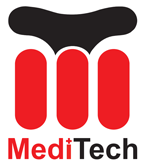يعد التحقق من صحة التنظيف عملية أساسية في الصناعات الصيدلانية والتكنولوجيا الحيوية لضمان أن تكون المعدات والمرافق خالية من أي بقايا من المنتجات السابقة, وكلاء التنظيف, أو الكائنات الحية الدقيقة التي يمكن أن تلوث الدفعة التالية. أخذ العينات خطوة حرجة في التحقق من صحة التنظيف, لأنه يسمح بالكشف عن أي مواد متبقية وتقديرها على الأسطح, في شطف الماء, أو في المسحات. في هذه المقالة, سنناقش أساسيات أخذ العينات للتنظيف, بما في ذلك أنواع العينات, طرق أخذ العينات, والتقنيات التحليلية.

أنواع العينات
هناك ثلاثة أنواع رئيسية من العينات التي يمكن جمعها أثناء التحقق من الصحة:
1. عينات السطح: هذه مأخوذة من أسطح المعدات بعد التنظيف ويمكن جمعها باستخدام مسحات, مناديل, أو شطف. أخذ عينات السطح هو النوع الأكثر شيوعًا في أخذ العينات في التحقق من صحة التنظيف, لأنه يقدم دليلًا مباشرًا على نظافة المعدات.
2. شطف العينات: يتم جمعها من مياه الشطف المستخدمة لتنظيف المعدات ويمكن استخدامها للكشف.
3. عينات المسحة: هذه مأخوذة من المناطق أو الأسطح المعدات التي يصعب الوصول إليها مع هندسة معقدة لا يمكن أخذ عينات منها بسهولة مع مناديل أو شطف. أخذ عينات المسحة هي طريقة أكثر توغلاً تتضمن فرك مسحة معقمة على السطح ثم استخراج أي مواد متبقية من المسحة.
مسحة التحقق من تنظيف Meditech:

طرق أخذ العينات
هناك العديد من طرق أخذ العينات التي يمكن استخدامها في التحقق من صحة التنظيف, اعتمادًا على نوع العينة والمعدات التي يتم أخذ عينات منها. تشمل بعض أساليب أخذ العينات الأكثر شيوعًا:
1. أخذ العينات السطحية المباشرة: يتضمن ذلك مسح مسحة معقمة أو امسح على سطح المعدات ثم استخراج أي مواد متبقية من المسحة أو المسح.
2. أخذ العينات غير المباشرة السطحية: يتضمن ذلك وضع مسحة معقمة أو تمحو في كمية صغيرة من شطف الماء ثم مسح سطح الجهاز مع المسحة أو المسح. ثم يتم تحليل مياه الشطف لأي مواد متبقية.
3. شطف أخذ العينات: يتضمن ذلك جمع كمية صغيرة من مياه الشطف من المعدات ثم تحليلها لأي بقايا قابلة للذوبان.
4. أخذ العينات المسحة: يتضمن ذلك فرك مسحة معقمة على سطح المعدات ثم استخراج أي مواد متبقية من المسحة.
التقنيات التحليلية
بمجرد جمع العينات, يجب تحليلهم لتحديد وجود ومقدار أي مواد متبقية. هناك العديد من التقنيات التحليلية التي يمكن استخدامها للتحقق من صحة التنظيف, مشتمل:
1. كروماتوجرافيا سائلة عالية الأداء (HPLC): يتم استخدام هذه التقنية للانفصال, تعريف, وقياس مكونات عينة بناءً على خصائصها الكيميائية.
2. كروماتوجرافيا الغاز (GC): يتم استخدام هذه التقنية للانفصال, تعريف, وقياس مكونات عينة بناءً على تقلباتها.
3. فورييه تحويل التحليل الطيفي للأشعة تحت الحمراء (ftir): يتم استخدام هذه التقنية لتحديد التركيب الكيميائي للعينة بناءً على امتصاصها للإشعاع بالأشعة تحت الحمراء.
4. التحليل الطيفي للأشعة فوق البنفسجية: يتم استخدام هذه التقنية لقياس امتصاص أو نقل الضوء بواسطة عينة في المناطق فوق البنفسجية أو المرئية من الطيف الكهرومغناطيسي.
خاتمة
أخذ العينات خطوة حرجة في التحقق من صحة التنظيف, لأنه يسمح بالكشف عن أي مواد متبقية وتقديرها على الأسطح, في شطف الماء, أو في المسحات. هناك عدة أنواع من العينات, طرق أخذ العينات, والتقنيات التحليلية التي يمكن استخدامها في التحقق من صحة التنظيف, اعتمادًا على المعدات التي يتم أخذ عينات منها ونوع البقايا التي يتم اكتشافها. من خلال ضمان أن تكون المعدات والمرافق خالية من أي بقايا, يساعد التحقق من صحة التنظيف على ضمان سلامة وفعالية منتجات الصيدلانية والتكنولوجيا الحيوية.
 مسحات رغوة غرف الأبحاث, مسحات بوليستر, الشركة المصنعة لمجموعة أدوات تنظيف الطابعة – ميديتك
مسحات رغوة غرف الأبحاث, مسحات بوليستر, الشركة المصنعة لمجموعة أدوات تنظيف الطابعة – ميديتك